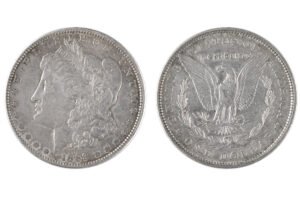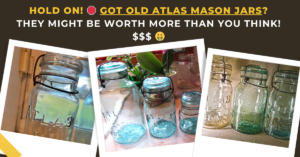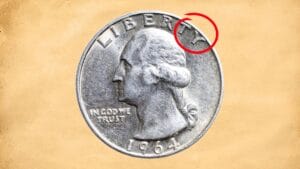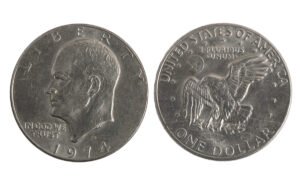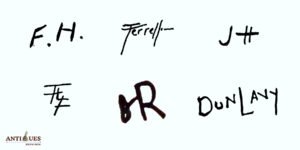If you have a silver dollar coin from 1889 in your pocket, you could instantly become super rich! Although looking ordinary, this valuable dollar coin can actually be worth as much as $880,000, like an MS68 example sold in a coin auction at Stack’s Bowers.
To find out if your 1889 Morgan Dollar is a hidden gem, you must understand all the rare features it could possess. In this guide, I will introduce you to all crucial factors, such as coin grades and mint marks, and valuable characteristics, like proofs and mint errors, that can turn your 1889 silver dollar into a hefty amount!
Fascinating History of the 1889 Morgan Dollar
The Morgan Dollar series, named after its designer George T. Morgan, began in 1878 and continued until 1904, with a brief revival in 1921. The 1889 issue emerged during significant silver production in the United States, driven by the Bland-Allison Act of 1878.
This particular year saw substantial mintage across three facilities: Philadelphia, New Orleans, and San Francisco. The 1889 Morgan Dollar was minted amidst ongoing debates about monetary policy and the role of silver in the American economy, reflecting the complex financial landscape of the late 19th century.
Despite its large mintage, many 1889 Morgan Dollars were melted following the Pittman Act of 1918, inadvertently increasing the numismatic value of the survived coins.
| 1889 Morgan Silver Dollar | Key Facts |
| Material Composition | 90% Silver, 10% Copper |
| Minting Location | Philadelphia, Carson City, New Orleans, & San Francisco |
| Year of Minting | 1889 |
| Face Value | $1.00 |
| Weight | 26.73 grams |
| Actual Silver Weight (ASW) | 0.7734 oz |
| Diameter | 38.1mm |
| Thickness | 2.4mm |
| Designer | George T. Morgan |
| Mint Marks | ‘CC’ – Carson City, ‘O’ – New Orleans & ‘S’ – San Francisco |
| Total Mintage | 34,651,811 coins |
Spotting an 1889 Morgan Silver Dollar (Design & Composition)
The 1889 Morgan Dollar features a distinctive design that makes it an easily recognizable coin in American history. Let’s explore its key features:
1889 Morgan Dollar Obverse Design:

- Lady Liberty’s head facing left, wearing a Phrygian cap adorned with wheat and cotton
- “E PLURIBUS UNUM” motto above Liberty’s head
- 13 stars surrounding the portrait (lower half), representing the original colonies
- The mint date “1889” below the bust
1889 Morgan Dollar Reverse Design:
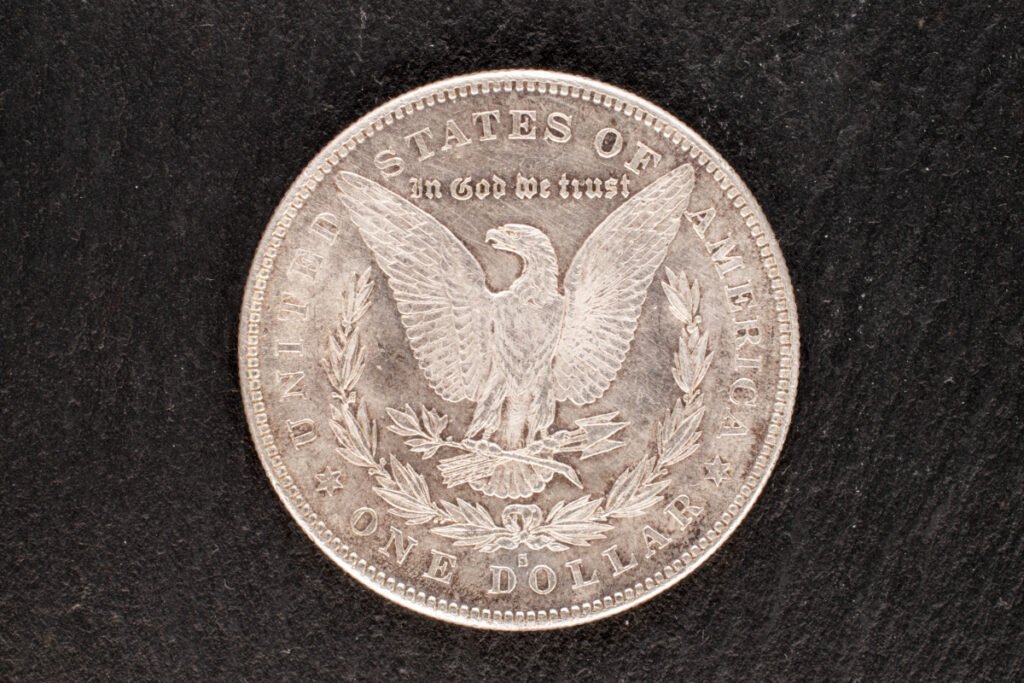
- Eagle with spread wings, holding arrows and an olive branch
- The words “UNITED STATES OF AMERICA” inscribed along the top edge
- “ONE DOLLAR” denomination below the eagle
- The words “IN GOD WE TRUST” motto above the eagle
- The mint mark (if present) above “DO” in “DOLLAR.”
Coin Composition, Size, Dimensions
The 1889 Morgan Dollar is composed of 90% silver and 10% copper, adhering to the standard set for American silver dollars of the era. It weighs 26.73 grams and measures 38.1 mm in diameter, with a thickness of 2.4 mm.
The edge of the coin features reeding, a security feature that also adds to its aesthetic appeal. The Morgan Dollar’s substantial size and weight gave it its nickname, “cartwheels,” due to its sound when rolled across a table.
Finding the 1889 Morgan Silver Dollar Value (5 Factors)
On average, an 1889 Morgan Silver Dollar in circulated condition can be worth anywhere from $25 to $50. However, coins in uncirculated condition or those with rare characteristics can command high prices ranging from $100 to $10,000+ or more.
Let’s understand all the factors that determine the final worth of an 1889 silver dollar:
1. Mint Marks & Mintage
The total mintage for 1889 Morgan Dollars across all mints was 34,651,000 coins. Here’s a breakdown by mint location, which you can identify by the mint mark on the coin’s reverse below the eagle:
- 1889 Morgan Dollar No Mint Mark: With a total of 21,726,811, the Philadelphia mint produced the most 1889 Morgan Dollars. These coins bear no mint mark and are generally the most common. Circulated coins are worth $25-$50, while uncirculated examples can fetch $60-$300 or more. The highest grade MS68 examples can sell for up to $25,500, like this one sold for $25,300 on Heritage Auctions.
- 1889 O Morgan Dollar: Denoted by an “O” mint mark, the New Orleans Minit produced 11,875,000 1889 Morgan Dollars. These coins are slightly more valuable than their Philadelphia ones, with circulated coins selling for $30-$60 and uncirculated coins ranging from $70 to $400 and MS66+ fetching $40,000+.
- 1889 S Morgan Dollar: The San Francisco mint, identified by an “S” mint mark, produced 700,000 Morgan Dollars. Circulated 1889-s dollars can be worth $50-$150, while uncirculated coins in high grades MS66+ can range from $5,000 to $16,000 or more.
- 1889 CC Morgan Dollar: Carson City only minted 350,000 silver dollars in 1889, identified by the “CC” mint mark. Due to the lowest mintage, the Carson City Morgan Dollar is extremely valuable, with the highest value being $881,250 for an MS68 example.

2. Coin Grading and Condition
The condition of an 1889 Morgan Dollar significantly impacts its value. Coins are graded on a scale from Poor (P-1) to Perfect Mint State (MS-70). For 1889 Morgan Dollars, coins graded MS-65 or higher are particularly valuable.
Key areas that affect grading include:
- Hair detail above Liberty’s ear
- Cheek and necklines
- Eagle’s breast feathers
- Overall luster and strike quality
You can assess the condition of your dollar coin by observing these details. However, remember that coins graded by professional services, such as the Professional Coin Grading Service (PCGS), Numismatic Guaranty Corporation (NGC), American Numismatic Association Certification Service (ANACS), and others, are valued more.
The following 1889 Silver Dollar value chart will help you find your coin’s average value based on its coin grades and mint locations.
| Coin Grades | 1889 $1 No Mint Mark | 1889-O $1 | 1889-S $1 | 1889-CC $1 |
| Poor (0) to Extremely Fine (XF45) | Around $20 | $25 – $80 | $45 – $150 | $3,000 – $6,500 |
| Almost Uncirculated (AU50) to Mint State (MS60) | $30 – $50 | $50 – $350 | $60 – $220 | $5,000 – $20,000 |
| Mint State (MS61 – MS64) | $40 – $250 | $250 – $900 | $250 – $850 | $20,000 – $140,000 |
| Mint State (MS65 – MS66+) | $300 – $5,000+ | $2,500 – $45,000+ | $1,500 – $6,500 | $150,000 – $600,000 |
| Mint State (MS67 – MS67+) | $8,000 – $15,000+ | N/A | N/A | N/A |
| Mint State (MS68 or Above) | $20,000 – $25,500+ | N/A | N/A | $500,000 – $880,000+ |
3. 1889 Morgan Silver Dollar Proof Coins
Apart from the regular strikes, the Philadelphia Mint also struck 811 proof 1889 Morgan Dollars. These coins feature sharper details and a mirror-like surface, resulting from special production techniques.
Depending on the details, 1889 silver dollar proof coins are divided into three categories:
- Regular Proofs: These have a uniform, mirrored surface. The regular 1889 Morgan Dollar proof coin value ranges from $1,500 to $25,000, depending on condition or PR grades, with coins graded PR68 fetching up to $34,000.
- Cameo Proofs: These feature frosted devices (raised areas) contrasting with mirrored fields. They’re rarer and more valuable, typically worth $5,000 to $50,000, but a rare coin graded PR68 CAM sold for an eye-popping price of $74,750 on Heritage Auctions.
- Deep Cameo (or Ultra Cameo) Proofs: These have an even more pronounced contrast between frosted devices and mirrored fields. Only a few 1889 DCAM silver dollar proof coins have been discovered and graded as they are extremely rare. An MS66 example sold for $19,200 in a coin auction at Heritage Auctions.
Apart from this, you can also find some 1889 Morgan Proof-like coins, which feature similar sharp details, like proof, but are less valuable. PL-graded coins, with less resemblance to the proof finish, are less valuable than the DMPL-graded coins with stronger proof-like strikes.
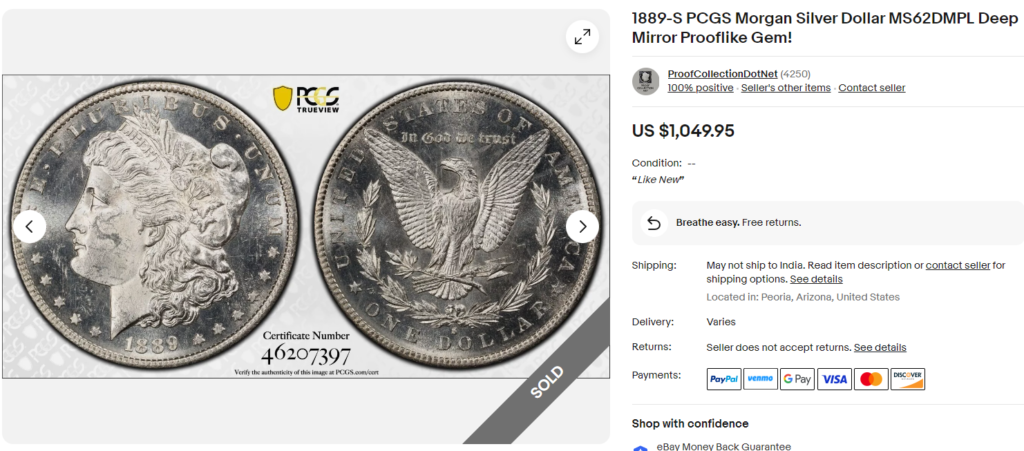
4. Valuable Mint Errors on 1889 Morgan Dollar
Coin errors that occur during the minting process directly impact the value of a coin. As for the 1889 Morgan Silver Dollar, the following mint errors can increase its worth:
Off-Center Strike
If the planchet isn’t perfectly centered during striking, the result is an off-center strike error, in which a part of the design may be missing. Depending on the condition and mint mark, 1889 silver dollars with minor off-center strikes (5-10%) can be worth $500 to $10,000.
I found an MS62 1889 silver dollar with a 10% Off-strike that sold for $6,462 on Heritage Auctions. Although not found yet, I believe more dramatic off-center strikes can fetch more premium prices.
Rotated Dies
This is a type of minting error in which the design on the 1889 silver dollar coin is misaligned due to one of the dies being rotated when it was struck. Depending on the condition and degree of rotation, the 1889 Morgan Dollar with rotated die error can range from $80 to $1,000, like this VG10 example with 80-degree rotation that sold for $110.
Broadstruck Error
This mint error happens when the 1889 Morgan Dollar coin is struck outside the collar, resulting in a larger diameter and often a distorted appearance. This type of error is relatively rare and can significantly increase the coin’s value. An XF45 example of this error coin sold for over $515 on Heritage Auctions.
Apart from this you can also find the common mint errors, such as the Double Die error, the Repunched Mint Mark error, and Die Cuds errors on the 1889 silver dollars.
5. Rare VAMs on 1889 Silver Dollar
Named after the numismatists Leroy Van Allen and George Mallis, who developed the system of “Van Allen-Mallis” or “VAMs” to catalog various die varieties and errors. As for the 1889 Silver Dollar, you must look for the following VAMs:
Doubled Ear Variety (VAM)
This rare variety of the 1889 Morgan Silver features a doubling of Lady Liberty’s ear on the coin’s obverse. Depending on the condition, the doubled ear 1889 silver dollar can be worth $50 to $120 in common mint grades, with higher grades like MS66 fetching up to $1,000+.

THE BAR WING
Often found in 1889, there was no mint mark on silver dollars, but this VAM features a die chip or die crack on the top of the eagle’s wing or the reverse. You may also find these chips on the olive branch leaves. This VAM error can be worth $100 – $2,000 in the mint state, depending on coin grades, with high-grade examples, MS66 or above, fetching more.

Can You Identify an 1889 Morgan Dollar Counterfeit?
If you are in doubt whether your 1889 Morgan Dollar is a real silver coin, follow these five steps to differentiate a fake from the genuine coins.
- Check the Weight & Dimensions: Use a precise scale and calipers to ensure the 1889 dollar coin matches the weight of 26.73 grams and the diameter of 38.1 mm. If it doesn’t, it’s likely a fake.
- Examine the Mint Mark: Ensure the mint mark’s size, position, font, and style (if present) are correct for the 1889 issue. Fake coins may have wrong mint marks.
- Assess the Surface: Genuine 1889 Morgan Dollars coins have a specific luster and texture. Counterfeits often have a dull, grainy, or too-perfect appearance.
- Check the Edge: All 1889 dollars have a reeded edge. Coins with plain edges or irregular reeding are generally fake.
- Use a Magnet: A real 1889 silver dollar is not magnetic. If your coin is attracted to a magnet, it’s likely fake.
In conclusion, the 1889 Morgan Dollar is a beloved and valuable coin among coin collectors. Its potential for high value, combined with its interesting history, makes it highly sought-after. So, if you’re thinking of trading this coin, ensure that you assess its right value using this guide!
If you’re interested in collecting other valuable silver dollars, look out for the 1879 Morgan Dollar, 1881 Morgan Dollar, and 1921 Morgan Dollar. You can learn to assess the worth of these valuable coins with my detailed price guides!
Note: This article is intended for informational, educational, and entertainment purposes only. Some images are illustrative and may not represent actual brands, products, or related entities. All trademarks, product names, brand logos, packaging, and other intellectual property referenced remain the exclusive property of their respective owners. Any brand mentions or references are provided solely for descriptive and educational context and do not imply any formal or commercial association.

